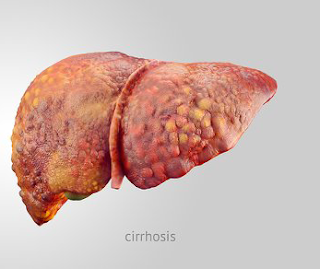When using steroids, DHT levels will increase. With the increase comes possible side effects. These side effects include hair loss, and Gynecomastia, or the development of breasts in men is common as well. The reason DHT increases during steroid use is because estrogen production decreases. Estrogen production increases with testosterone levels while both are at low levels. As a result of the decrease in estrogen level, receptors in your skin cells will become more receptive to DHT resulting in the increase of these side effects.
DHT causes Hair loss because the hormone will attach to your receptors, and when it does attach, the hair follicle will decrease in size by shrinking. The hair strands themselves begin to change as well. As the cells slowly die out, the hair strand protrudes from the skin before falling out. The exact reason DHT causes male pattern baldness is not completely known. Most scientists agree that DHT destroys cells in the glands which are responsible for making other hormones responsible for producing longer and fuller hairs. Others also believe that because DHT is so potent, it actually prevents new hairs from growing in areas where there were once hairs before.
 |
Is there anything you can do to reduce or prevent the side effects?
One solution is to use an anti-DHT medication such as Proscar or Propecia to combat DHT side effects while using steroids. Other therapies include the use of other supplements that go against DHT. There are many which contain ingredients that will strengthen your hair follicles and prevent DHT from destroying them. These include Saw palmetto, which suppresses DHT production, and Nettle root, which actually boosts testosterone levels in your body.
DHT is very potent and control your hormone levels will help you keep your hair growth at its peak. Keeping a healthy diet of anti-oxidants such as vitamins C and E will also help to strengthen hair follicles. Hair loss is the most common side effect for men and women who take steroids. The hair loss is normally reversible and will grow back with discontinuation of all anabolic steroid use.
DHT causes Gynecomastia because the body still produces estradiol, which is transformed into estrogen through aromatase. The enzymatic conversion of estrogen to estradiol takes place through organ-specific cytochrome P450 enzymes, specifically CYP17A1 and CYP19A1. Once its conversion occurs, the amount of estradiol remains elevated in the blood for longer than it would if testosterone were dominating the estrogen level. This keeps circulating estradiol levels higher in your blood for longer than they would be if you received a testosterone hormone replacement therapy.
If too much hair loss has accrued only s hair transplant can truly help. Your hair will never be the same as it once was, but for many, that's okay. You may need to get a hair transplant twice before you're completely satisfied. And as with any surgery, there are risks. Even though hair transplant is the most common procedure, there are still risks: postoperative infections, hair loss during the healing process, graft mismatches, and graft failure.
You must understand the difference between Follicular Unit Transplantation (FUT) and strip harvesting. Follicular Unit Transplantation is a method of harvesting donor hair follicles from the back of your scalp. Stem cell therapy is also used to produce follicles for hair transplantation. There is an increased risk of complications with FUT because there is no skin left from which to undergo surgery. For the most part hair transplants are permanent.
If gynecomastia has occurred, avoidance of anabolic steroids will reduce the risk of further breast growth. If you experience chest pain, it may be a result of gynecomastia. Surgery might be required.
The side effects of high DHT levels are mostly a result of the aromatase enzyme being overproduced. Gynecomastia and hair loss are the most serious DHT side effects, but there are others that can be overcome with proper medication. By lowering DHT through medicine, you reduce the risk of further growth.


